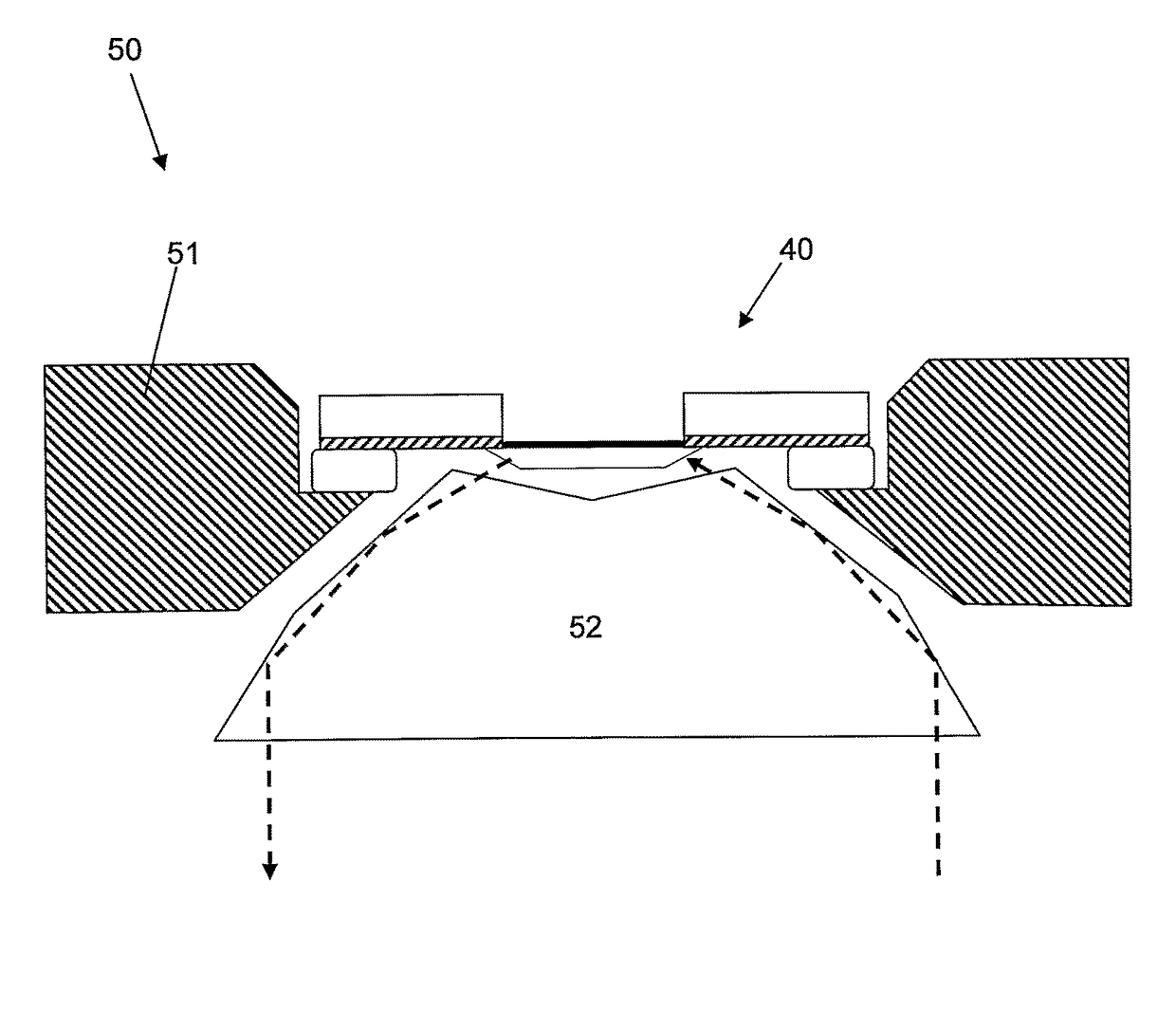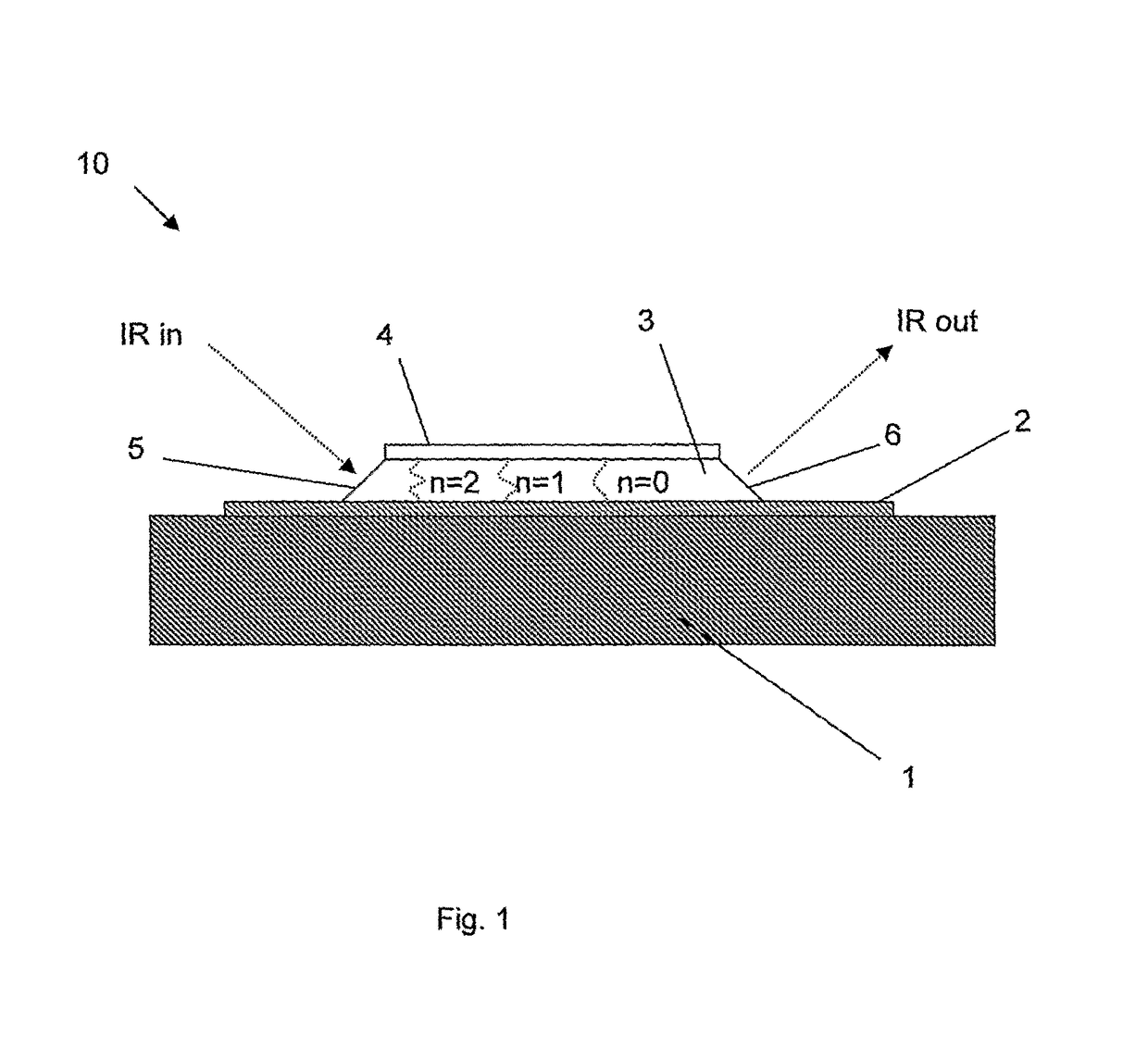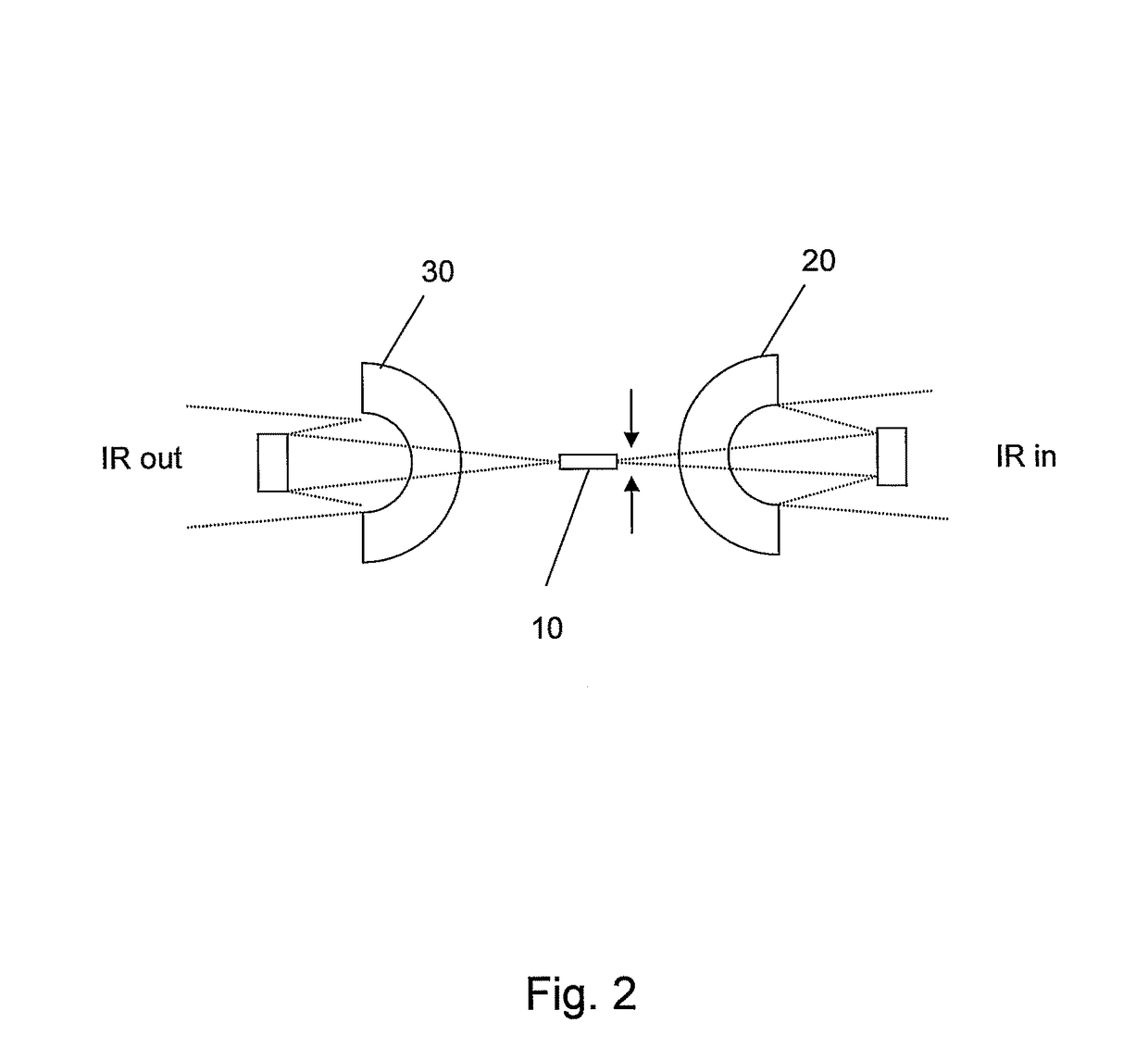Optical sensor unit for evanescence wave spectroscopy
a technology of evanescence wave and optical sensor, which is applied in the direction of instruments, coatings, and analysis by subjecting materials to chemical reactions, can solve the problems of poor sensitivity to small molecules, inability to meet the requirements of chemical and electrical stability, reproducibility, biochemical surface modification, and inability to bio-integration, etc., to achieve high transmission, high selectivity, and high sensitivity. the effect of throughput analysis
- Summary
- Abstract
- Description
- Claims
- Application Information
AI Technical Summary
Benefits of technology
Problems solved by technology
Method used
Image
Examples
examples
[0055]Example 1: Nanocrystalline diamond films were grown by a hot-wire CVD method from a CH4 / H2 mixture [16]. The crystal size is in the nanometer range in agreement with our independent results from the Raman measurements presented above. Based on the optical characterization, NCD film growth limitations, our theoretical results, a final waveguide design included a 2 μm thick SiO2 layer grown by oxidation in wet atmosphere at 1050 degrees Celsius of the silicon substrate. The diamond waveguide was constructed from a 10 μm thick poly-crystalline diamond film of infrared optical quality grown on top of the SiO2 / Si substrate with an additional thin (0.1 μm) NCD layer grown on the poly-crystalline diamond film. We use polycrystalline diamond as waveguide and grow NCD on top of the poly-crystalline film rather than having a thick NCD film. The reason for this is mainly because the poly-crystalline diamonds has in general superior optical properties and scatter less light than NCD films...
PUM
| Property | Measurement | Unit |
|---|---|---|
| refractive index | aaaaa | aaaaa |
| thickness | aaaaa | aaaaa |
| thickness | aaaaa | aaaaa |
Abstract
Description
Claims
Application Information
 Login to View More
Login to View More - R&D
- Intellectual Property
- Life Sciences
- Materials
- Tech Scout
- Unparalleled Data Quality
- Higher Quality Content
- 60% Fewer Hallucinations
Browse by: Latest US Patents, China's latest patents, Technical Efficacy Thesaurus, Application Domain, Technology Topic, Popular Technical Reports.
© 2025 PatSnap. All rights reserved.Legal|Privacy policy|Modern Slavery Act Transparency Statement|Sitemap|About US| Contact US: help@patsnap.com



